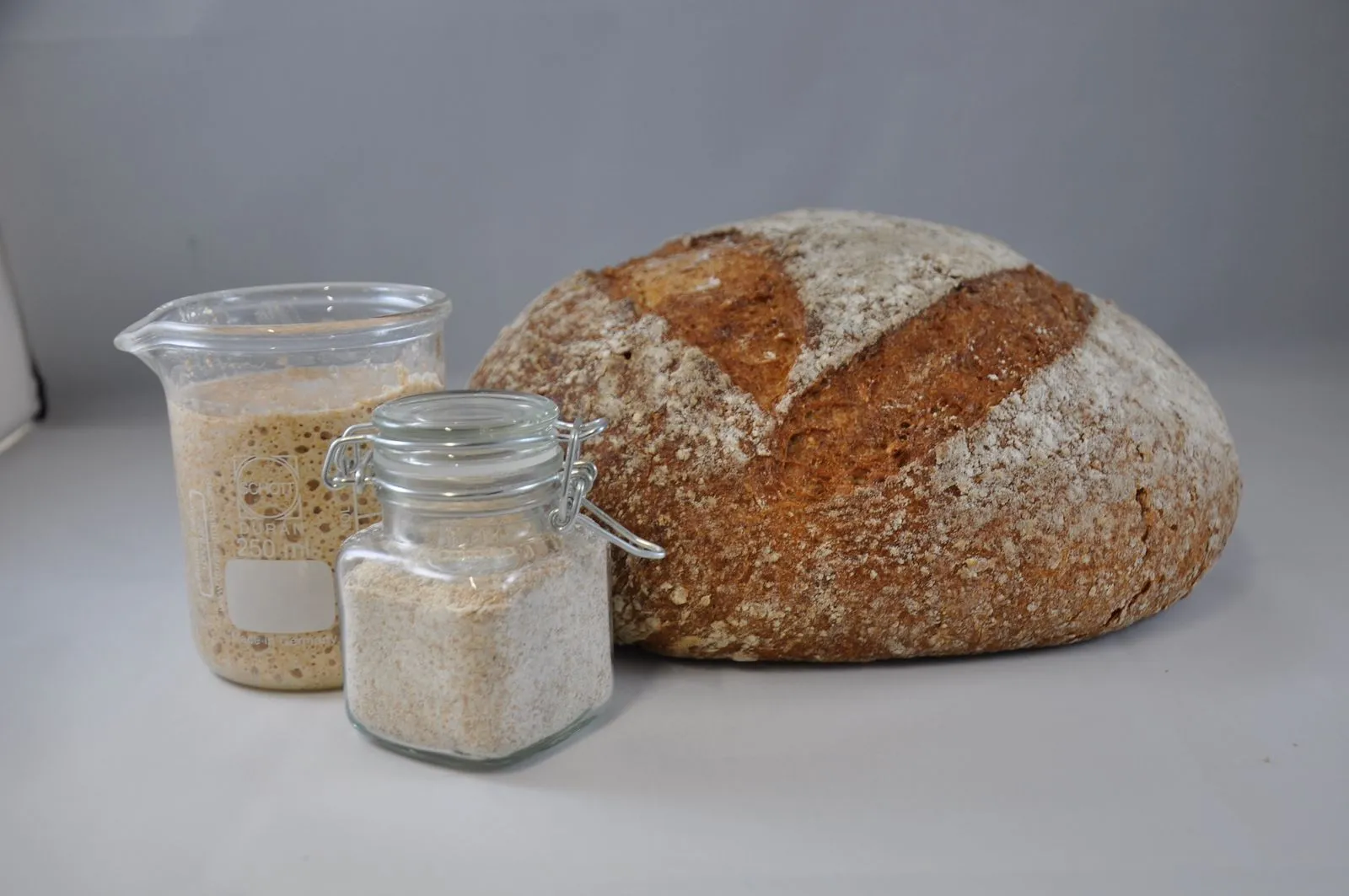Is sourdough bread always healthier than yeast bread? As a home baker, you can give science a hand to find an answer to this question!
Many people are convinced that sourdough bread is healthier than yeast bread, but in Belgium there is no legislation about when you can call a bread a sourdough bread. There are countless recipes for sourdough bread, and this complicates its evaluation. As a home baker, you can now give science a hand.
With the large amount of time suddenly freed up during the lockdown, Sara, like many others, started making her own sourdough. Quite simply, adding water to flour and repeating it every so often. After more than a week she was able to start using her sourdough to bake a real sourdough bread. Her biggest motivation: the fact that she had heard that sourdough bread would be healthier than regular bread.

Why would sourdough bread be healthier?
Some scientific studies show that using sourdough in bread can have a positive effect on sugar levels, satiety, gastrointestinal comfort and mineral accessibility. Unfortunately, there are also just as many scientific studies that see no effects of using sourdough in bread on our health. The possible health effects are attributed to the bacteria and yeasts present in sourdough. During fermentation, they produce acids and convert other components of the flour.
Sourdough bread for scientists
In our lab, where we have been researching bread for decades, a few years ago we wanted to look for scientific evidence behind the possible health effects of sourdough bread. Full of enthusiasm, we started in our lab bakery in the same way Sara had started at home. Soon we ran into some problems. How much sourdough do we add to our bread dough? How long do we let the dough ferment? Do we add additional yeast or not? This is because all of these parameters can have an effect on how many components can be converted by the bacteria and yeasts in sourdough.
Therefore, we started by digging out the legislation. When can you actually call a bread a sourdough bread? This did not tell us much. In Belgium, there is no legislation. In the Netherlands, however, requirements were included in the legislation in 2020, and there is also legislation in other European countries. But a bread that can be called sourdough bread in the Netherlands is not in France and vice versa.

Therefore, we searched further in the scientific literature. We found 346 articles investigating sourdough bread made with wheat. Also from these articles we did not get much clarity because in 27% of the articles the recipe was not sufficiently explained. In the 253 scientific articles where there was sufficient explanation, there was a huge variation in the recipes used for sourdough bread. The amount of sourdough in dough varied from 2 to 100%, the amount of baker's yeast from 0 to more than 4%, and the fermentation time from 30 minutes to more than 20 hours. These differences will have a great impact on how the bacteria and yeasts from the sourdough can work, affecting the properties of the bread. Therefore, in the scientific literature, the sourness of the breads varied between a pH of 3 and 6. The specific volume of the breads also varied between 1 ml/g, which can be compared to the density of water, to 6 ml/g which is more towards the density of feathers.
Is sourdough bread healthier than regular bread now?
We cannot answer this question at this time. It could be that the use of sourdough can make a bread even healthier. More research on the effects of the bread recipe on health parameters is crucial to clarify this. Nevertheless, whether or not sourdough is used will never become the most important parameter that will determine the effect of bread on our health. The type of flour used will always be the most important. For example, a white sourdough bread will never be healthier than a whole wheat yeast bread. The fiber and vitamins present in the outer layers of the wheat grain are not present in white bread. By eating gray bread, you are already doing a little better because in this, half of the flour is whole wheat and the other half is white. However, wholemeal bread will always be superior to other types of bread in terms of health benefits. Here, however, sourdough can play an important role. In fact, most people find wholemeal bread less tasty than white or gray bread. But besides possible health benefits, sourdough can also provide a tastier bread with more flavor, a more pleasant texture and a longer shelf life. Thus, by using sourdough, more people could be persuaded to eat whole wheat.
Home bakers can contribute to research
Now that we know how sourdough bread is made in the scientific literature, we are also very interested in how people make sourdough bread at home. Therefore, we started a citizen science project as part of the European project HealthFerm. Together with citizens during co-creation workshops in Belgium, Switzerland, Finland and Sweden, this citizen science project was set up. Sourdough bakers around the world can fill out an online questionnaire about how they made their sourdough and how they bake sourdough bread. Sara also already filled out the questionnaire and was even selected for the next phase of the study. She was sent all the necessary materials at home to easily return a particle of her sourdough and even do some experiments at home. At the end of the project, she will be able to see online what microorganisms are in her sourdough and how her sourdough differs from the more than 500 other sourdoughs that will be analyzed in Europe. Are you also curious about who brews your bread?

